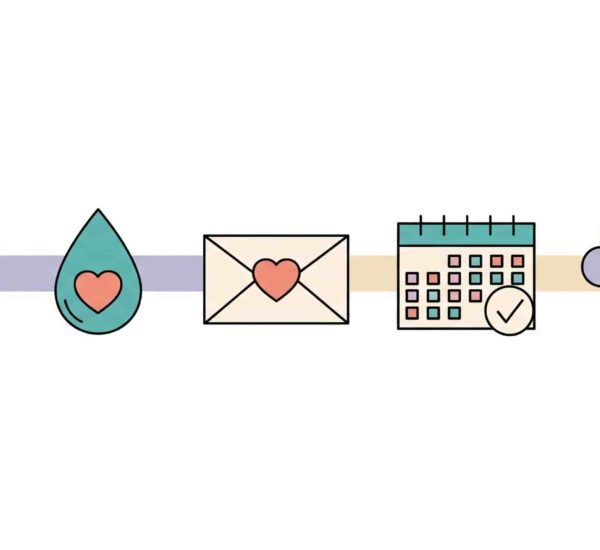Furloughs, a word many people hadn’t heard until recently, are now the talk all around the world. After the pandemic struck, unemployment surged to 14.7% in April 2020, which is the highest since the Great Depression. Ever since then, furloughs are steadily rising, which is now replacing layoffs.
But what are furloughs? How do they work? Are they any better than layoffs?
This article will answer all these questions. In addition, you’ll see some ways to help furloughed workers. Let’s begin with some basic definitions.
What are Furloughs?
Furloughs are an unpaid type of leave that an employee gets. Unlike layoffs, furloughs are considered temporary and the employee gets back to their job after some time. Some furloughs are planned due to seasonal downturns in business. Today, many companies are turning to furloughs because of the benefits they have over permanently terminating an employee.
Two types of furloughs are known. During both types, employees are put on a non-pay and non-work period either due to lack of budget or lack of work. For instance, many employees have been furloughed since the pandemic.
Shutdown Furloughs
Shutdown furloughs, also known as emergency furloughs, are leaves given to employees in cases of an emergency. These furloughs occur when there is a lapse in appropriations or the expiration of an authorizing act that provides access to certain funds. An affected agency shuts down any activities funded by annual appropriations that are not accepted by law, in a shutdown furlough.
Administrative Furloughs
According to opm.gov, an administrative furlough, or money-saving furlough is a planned, short-term action designed to overcome budget reductions for reasons other than a lapse in appropriations.
Things to Keep in Mind Before Implementing Furloughs
You should keep in mind some things when it comes to implementing furloughs for your employees in order to make the most of them.
See if it’s the Right Thing to Do
A furlough is usually the best decision to make when your organization is going through temporary unforeseeable issues. For instance the pandemic. In such cases, employees are only furloughed to keep the retention rates steady, However, if that’s not the case and the organization is going through something rather serious, a furlough may not be the best solution.
Look for the Type of Employee
Some types of employees like part-time, temporary, or contract employees may not receive unemployment benefits during their furlough period. This may increase the administrative costs which can outweigh savings. In addition, losing a talented employee may also have the same impact.
Keep in Mind the Law
There are several rules and laws that govern furloughs and as employers, you should keep an eye on them. For instance, it is especially important to consider rules regarding health benefits given to employees during the pandemic.
Keep Things Fair
Layoffs usually target underperforming employees that leave opportunities to hire better-performing employees. Furloughs on the other hand may target most of the workforce in an organization which may seem unfair to many employees. To tackle this issue, employers can start by rotating employees within departments and reducing work hours first.
Notifying Employees
Whether it’s a furlough or a layoff, you must always give your employees advance notice. This helps build a relationship of trust between both employee and manager. Research shows that by exercising fairness when dealing with information, employees trust their managers more.
To notify your employees, you must give them all details regarding the leave. You must mention how it will affect them and the reason for doing this. After that, you should give your employees some time to think, and then answer any questions or concerns they may have.
How to Help Furloughed Employees?
Even if your employees are on furloughs, you can keep in touch. Some things to keep in mind are:
Don’t Pressure them Into Working
Furloughed employees don’t get paid and therefore you should not pressurize them into working on the down-low no matter how pressing the issue may be. It’s common to think that an employee is on leave and can work.
Communication is Always the Key
If your employees are furloughed, doesn’t mean they shouldn’t be contacted. Frequent communication is the key to building a healthy and transparent relationship. To make furloughs more humane, keep in touch and keep enquiring about their well-being. You can set aside some time and even a remote, once-a-week meeting should do wonders.
Your communication should be short, sweet, and relevant. If your employees are furloughed due to the pandemic, you must offer guidance or job postings for temporary work, etc.
Consider Flexible Furloughs
Sometimes it’s a good practice to let your employees choose the days they want to furlough. This will help them maintain a healthy work-life balance and schedule around child care needs.
See How they’re Doing
During the furlough, enquire about how they are doing. Try talking non-work. From any habits, they may have picked up during the leave to any other work they may be doing, ask it all.
Things to Keep in Mind to Recall Furloughed Workers
Once furlough ends you still need to take care of several things:
Keep Things Transparent Once Again
Most employees will need reassurance of some type about what the future is going to be like. Keep the communication transparent and frequent. You must assure them if the future is going to be bright and if not, they deserve to know. Doing so will build high levels of trust within the organization and especially you two.
As Avoiding Furlough Fallout tells us ‘Despite communication, retaining top talent and keeping morale high can be challenging. “People are worried about the future of the laboratory,” says Jackson. “They wondered if the cut indicated a lack of commitment by Congress to science and the work they do.”
In addition, advance notice of recall must be provided should to the employees describing things such as the date and location of their return to work, their title, their exemption status, their salary, etc.
“The more notice employers give, the more likely they are to retain those workers,” said Mamaysky.
Benefits of Furloughs
For Employees
Returning to Work
The biggest benefit of furlough to employees is that they get to keep the job. When employees are furloughed, they are expected to return to work. After they are furloughed, employers usually give them a specific time period and date they can resume their work.
Employment Rights
Employees have several rights when it comes to furloughs. For example, if a public sector employee is furloughed instead of laid off, they have the right to return to their job. Firing or terminating an employee requires an official termination process and notice.
Retain Benefits
Although furloughed employees aren’t paid during the furlough period, they retain their benefits. During the furlough, they can draw unemployment benefits and can also work for other companies. For example, they still get to retain health benefits and insurance of any other kind.
For Employers
Cost Reduction
One benefit of furloughs for employers is the reduction in cost. As compared to layoffs, in furloughs the employee is expected to return to work. On the other hand, a laid-off employee means the company needs to hire a new employee to fill the vacancy. Hiring and training the new hire is costly.
 Disadvantages of Furloughs
Disadvantages of Furloughs
Furloughing employees can have some disadvantages for the employers:
For Employers
Cost of Benefits
Perhaps a big downside of furloughs is that the company still has to pay the expenses for furloughed employees.
Losing Top Talent
Although the furloughs are usually short, during this time the top talent is likely to look for other jobs in order to be paid and stay on top of their game. Some people might update their resumes during this period and they are also the most likely to be hired. Plus, these are those employees that you wouldn’t want to lose.
Loss of Work
During the furlough, most employees including your top-performing ones are on leave. An interruption in work is inevitable in such a scenario. This causes instability at work and other complications. In some cases, for instance, a project that was left before employees were furloughed, may have to be started again after it.
For Employees
Reduction in Employee Morale
Sometimes furloughs are unexpected for instance in the case of the pandemic. When this happens, employee morale reduces. And because the future is so uncertain, they are likely to go through stress as well.
In an article on morale, Fermilab says ‘Morale also suffered. Last December, Fermilab conducted employee focus groups to find out if the organization had systemic discrimination problems against women and minorities. The good news: Discrimination wasn’t a problem. The bad news: People had residual unease related to furloughs that had ended seven months earlier. “We suffered a ding to our morale because of the furloughs,” says Jackson. “It’s been months later, funding is fine, but the aftershocks linger.”
All Set to Make the Most of Furloughs?
Like all strategies, furloughs too, require thoughtful analysis, and only then you should implement it. Furloughs have many benefits over layoffs and have recently become common around the world.
Some good that comes out of furloughs is that employers get to keep connection with their employees even if they’re potentially on leave, cut costs, and help employees take back their job once the situation improves.





